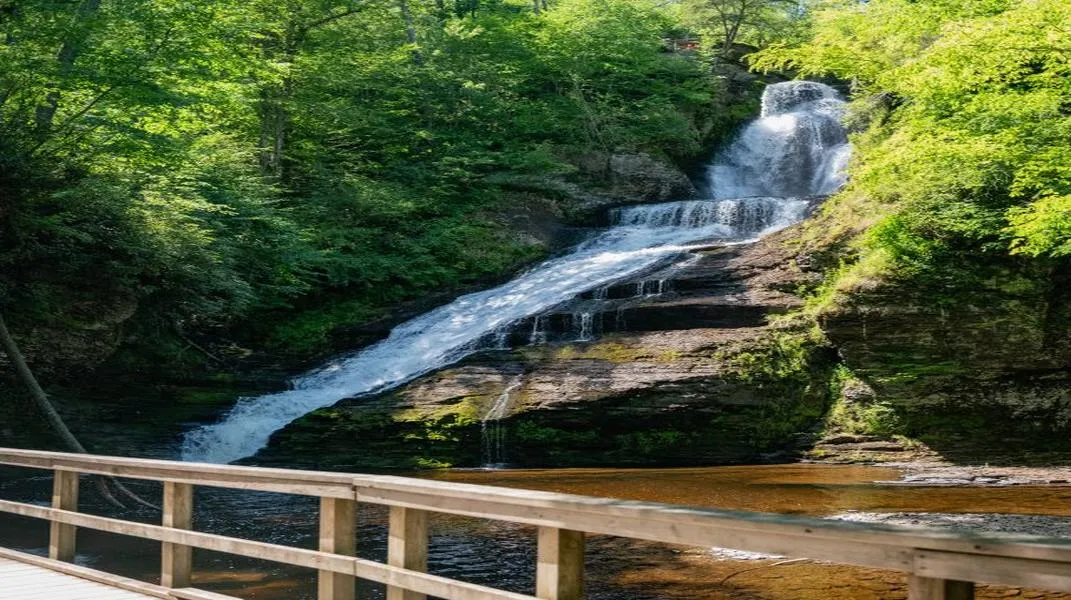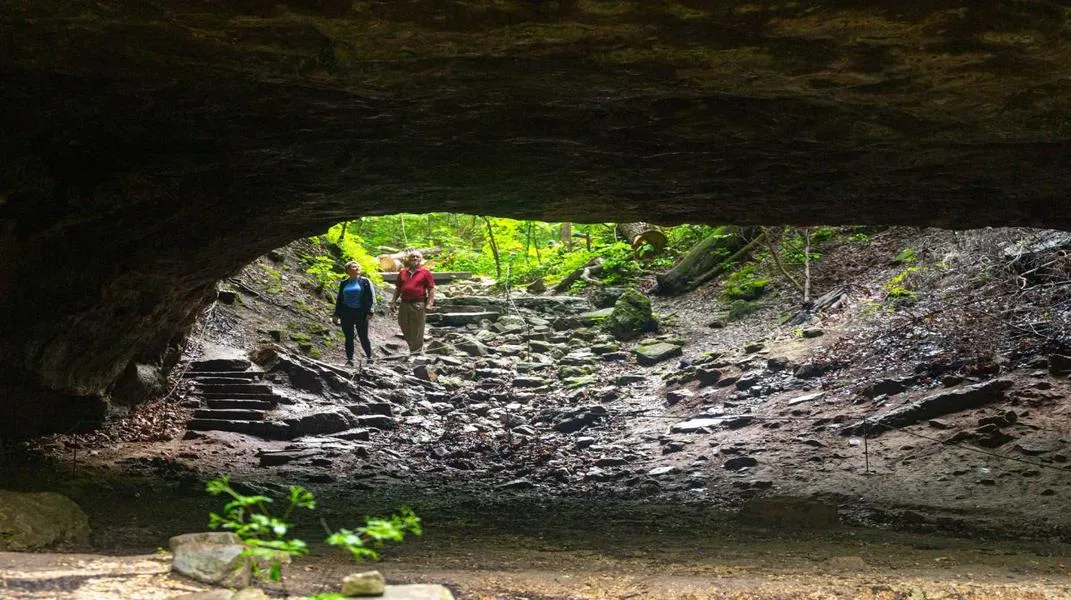Exploring the Natural Beauty of Delaware Water Gap: A Comprehensive Guide
Nestled between the states of New Jersey and Pennsylvania, the Delaware Water Gap National Recreation Area is a stunning natural gem that attracts visitors year-round. Known for its breathtaking landscapes, diverse wildlife, and numerous recreational activities, the Water Gap is a paradise for nature lovers, outdoor enthusiasts, and families alike. This article will delve into the various attractions within the area, the activities available, and the essential materials you'll need to prepare for your visit.

Overview of Delaware Water Gap
The Delaware Water Gap is a 70,000-acre national recreation area that encompasses part of the Delaware River and the surrounding Appalachian Mountains. The area is characterized by its dramatic cliffs, lush forests, and numerous waterfalls, making it an ideal location for hiking, kayaking, camping, and photography.
The term "water gap" refers to the unique geological formation where the Delaware River cuts through the Kittatinny Ridge, creating a natural passageway that has been a vital transportation route for various species and human civilizations for thousands of years. The region is rich in history and culture, with evidence of Native American habitation dating back thousands of years, as well as European settlers who arrived in the 18th century.
Attractions in the Delaware Water Gap
1. Scenic Overlooks
One of the most iconic features of the Delaware Water Gap is its stunning vistas. Several scenic overlooks provide breathtaking views of the river valley and the surrounding mountains. Notable overlooks include:
- Ridge Road: A scenic drive that offers panoramic views of the Water Gap, especially during the fall when foliage transforms into vibrant hues of red and gold.
- Mount Tammany: A popular hiking destination, the summit of Mount Tammany provides a breathtaking view of the Delaware Water Gap and the surrounding landscape.
2. Hiking Trails
The Delaware Water Gap is home to over 100 miles of hiking trails, catering to all levels of experience. Some must-visit trails include:
- Appalachian Trail: This famous trail runs through the park, offering stunning views and a chance to experience the rugged beauty of the Appalachian Mountains. A section of the trail leads to the summit of Mount Tammany and provides a challenging yet rewarding hike.
- Dunnfield Creek Trail: A moderate hike that takes you through lush forests and leads to a series of beautiful waterfalls, including the stunning Delaware Water Gap Falls.
- McDade Recreational Trail: A flat, multi-use trail that follows the Delaware River, making it perfect for hiking, biking, and walking. The trail is accessible and family-friendly, offering beautiful views of the river and wildlife.
3. Water Activities
The Delaware River is a major draw for visitors, offering a variety of water-based activities:
- Kayaking and Canoeing: The calm waters of the river make it ideal for kayaking and canoeing. Rentals are available, and guided tours can help you navigate the stunning waterways.
- Fishing: The Delaware River is home to various fish species, making it a popular spot for anglers. Whether you prefer fly fishing or traditional angling, you'll find ample opportunities to cast your line.
- Swimming: While swimming is not permitted in all areas, there are designated spots where visitors can enjoy a refreshing dip in the river during the warmer months.
4. Wildlife Viewing
The Delaware Water Gap is a haven for wildlife enthusiasts. The diverse ecosystems within the park are home to various species, including deer, black bears, and over 200 species of birds. Birdwatchers can enjoy spotting migratory species, including eagles, herons, and songbirds. The best times for wildlife viewing are early morning and late afternoon when animals are most active.
5. Historical Sites
Immerse yourself in the rich history of the area by visiting historical sites within the park:
- The Old Mine Road: This historic road, dating back to the early 18th century, provides insight into the region’s mining history and offers scenic views along the way.
- The Millbrook Village: A reconstructed 19th-century village that showcases the area's history and heritage. Visitors can explore historic buildings, attend demonstrations, and learn about early American life.
Preparing for Your Visit
To fully enjoy your visit to Delaware Water Gap, it’s essential to prepare adequately. Here’s a comprehensive list of materials and gear you should consider bringing along:
1. Clothing
Dress appropriately for the weather and activities planned. Layering is key, as temperatures can vary:
- Hiking Boots: Wear sturdy, comfortable footwear suitable for hiking on rugged terrain.
- Weather-Appropriate Clothing: Consider moisture-wicking fabrics, long sleeves, and breathable pants. A waterproof jacket can be invaluable if rain is in the forecast.
- Hat and Sunglasses: Protect yourself from the sun, especially during outdoor activities.
2. Backpack Essentials
A well-packed backpack can enhance your experience:
- Water Bottles: Hydration is crucial, especially during physical activities. Bring reusable water bottles or a hydration system.
- Snacks: Energy-boosting snacks like trail mix, granola bars, and fruit can keep you fueled throughout the day.
- First Aid Kit: A basic first aid kit can help handle minor injuries or discomfort.
- Map and Compass: While most trails are well-marked, having a physical map and compass can be helpful, especially in remote areas.
3. Outdoor Gear
Depending on your planned activities, consider bringing specific gear:
- Hiking Poles: Useful for stability and support on steep or uneven terrain.
- Kayaking Gear: If you plan to kayak or canoe, ensure you have the necessary gear, including life jackets and paddles.
- Binoculars: Bring binoculars for wildlife viewing and birdwatching.
4. Camping Supplies
If you're planning an overnight stay or camping trip:
- Tent and Sleeping Gear: Bring a tent, sleeping bags, and pads for comfortable sleeping.
- Camping Stove and Cookware: Prepare meals while enjoying the outdoors with a portable camping stove and essential cookware.
- Cooler: A cooler can keep food and drinks fresh during your stay.
5. Other Considerations
- Camera: Capture the stunning landscapes and wildlife with a camera or smartphone. Don’t forget extra batteries or a power bank.
- Insect Repellent: Protect yourself from bugs, especially during summer months.
- Sunscreen: Apply sunscreen regularly to protect your skin from UV rays.
Conclusion
A visit to the Delaware Water Gap National Recreation Area is a chance to immerse yourself in the beauty of nature, engage in outdoor adventures, and appreciate the rich history of the region. With its awe-inspiring landscapes, diverse wildlife, and countless recreational opportunities, the Water Gap is a destination that promises unforgettable experiences for all who venture there.
By preparing adequately and planning your activities, you can make the most of your visit to this stunning natural wonder. Whether you’re hiking scenic trails, paddling down the Delaware River, or simply soaking in the views, the Delaware Water Gap is sure to leave a lasting impression that beckons you to return time and time again. So pack your bags, gather your gear, and head out to explore the natural beauty of the Delaware Water Gap—an adventure awaits!
Related Posts

Exploring the Majestic Lake of the Ozarks: A Comprehensive Guide for Tourists

Discovering the Enchantment of Carmel-by-the-Sea: A Traveler’s Guide

The Allure of Las Vegas: A Comprehensive Guide to the Entertainment Capital of the World

